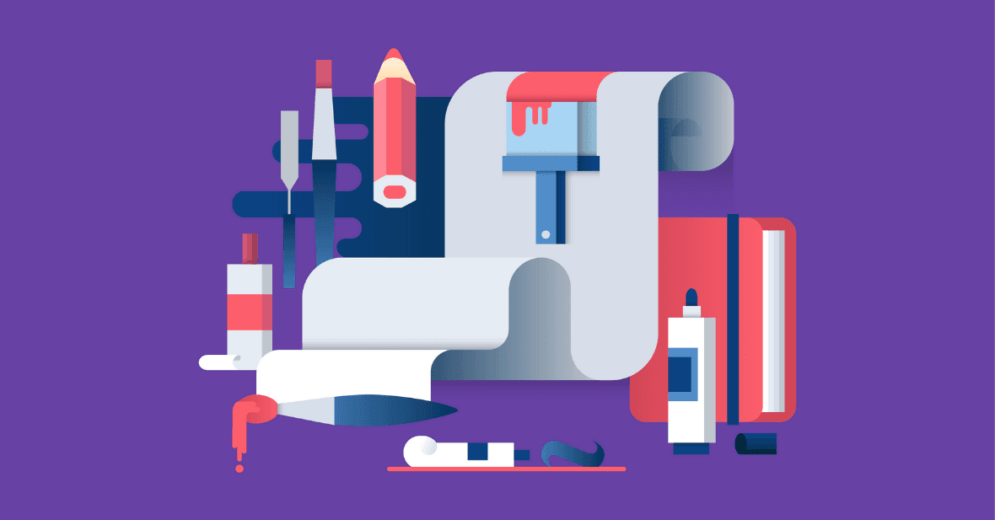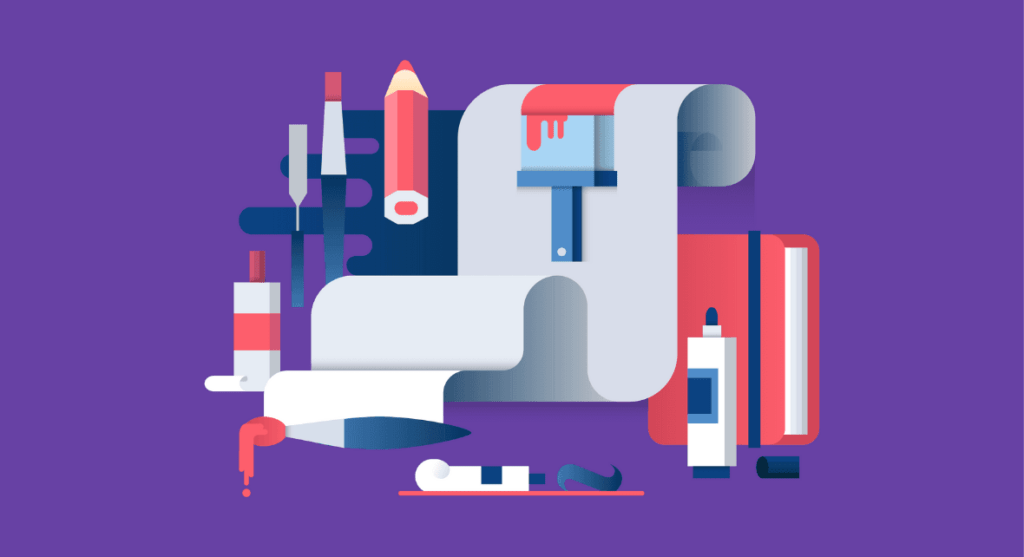Welcome to the world of UX Design! Whether you're just starting out or have been in the field for a while, one thing is for sure – having a killer portfolio is essential to showcase your talents and land the job of your dreams.
But what exactly is a portfolio, you may ask? Well, fear not, we've got you covered.
In this article, we'll not only define what a UX Design portfolio is, but also highlight common mistakes to avoid when creating one.
So, let's dive in and get ready to take your UX Design career to the next level!
What is a portfolio?
A portfolio is an essential document that showcases the best works of a professional.
In the past, portfolios were physical folders or briefcases that artists used to carry their artwork and present to clients or recruiters.
As time passed, these briefcases evolved into digital files, but the purpose of the portfolio remains unchanged – to showcase your skills and demonstrate your knowledge and personality through practical examples.
The Difference between a Portfolio and a Resume
When we compare a portfolio with a resume, they may seem interchangeable.
However, it's important to note that these documents serve different purposes and are meant to complement each other, not replace one another.
A UX Design portfolio showcases your previous work, the challenges you encountered, your approach, and the specifics of each project.
In contrast, a resume highlights your work history and professional background, such as the companies you've worked at, the courses you've taken, and your education.
It's crucial to have both documents available as they provide unique insights into your skills and qualifications.
Why having a UX Design portfolio is so important?

When it comes to getting hired, your UX Design portfolio is key. It's the first thing potential employers will see, so it's important to make sure it showcases your best work and leaves a great impression.
Even the smallest errors can have a major impact on your chances of securing a job opportunity.
Creating a portfolio requires careful planning and development. It's okay if it's not perfect at first because the goal is to improve it continuously.
A UX portfolio is a way to showcase your abilities and accomplishments during job interviews. It provides a clear and efficient way to demonstrate your thinking process and hands-on expertise.
It's important to note that most companies require a UX Design candidate to have a portfolio before considering them for employment. Therefore, having a well-crafted portfolio is vital for getting job interviews in this industry.
Reading tip: What’s The Difference Between UX And UI Design? – Understanding Once And For All
Tips to creat a great UX portfolio
When putting together a UX Design portfolio, it's important to avoid certain mistakes. By now, you likely have an understanding of what a UX Design portfolio is and why it's crucial.
So, let's delve into the errors you should steer clear of. These mistakes can be detrimental, so pay close attention to this information and ensure your UX Design portfolio is built correctly.
1st Mistake: focusing solely on visual elements

When building a UX Design portfolio, it's understandable to desire a visually appealing presentation that captures the interest of viewers.
However, it's crucial to prioritize the content over aesthetics. Overdoing the visual aspects can be distracting for those reviewing your portfolio.
Instead, focus on incorporating the necessary visual elements that complement your story.
Additionally, it's essential to showcase your authenticity and personality. Avoid using visual elements that don't align with your style.
Take your time to think through the content of your UX Design portfolio and how best to represent it visually.
Reading tip: Visual Hierarchy: How To Prioritize and Highlight Information
2nd Mistake: completely ignoring aesthetics
While it's true that overdoing it is not recommended, visual elements are crucial for telling your story and showcasing your experience.
Don't feel pressured to include everything, but make sure to add details that contribute to the overall quality and readability of your portfolio.
Additionally, keep in mind the usability aspect. Think of your portfolio's readers as your users and treat it like a UX project. So, organize your document in a way that provides the best possible reading experience.
3rd Mistake: not detailing the design process

Another common mistake in portfolios is presenting only the final results without explanations or details about the development process.
The path to the result is essential. It will show the difficulties you had, how you overcame them, and what your reasoning was to find the suggested solutions. You can turn to Storytelling to make the most of this process.
Showing your design process, and not just the result, is an essential aspect that needs to be included in your portfolio. So, make sure to show:
- How and which problems were raised;
- Your persona study;
- The research you used in all stages of the project;
- The people involved in the project;
- The process used to overcome the problem;
- The tools used to achieve the result;
- And finally, the final result.
And most importantly: explain how your thought process was during each stage of the project.
Diego Crovador, a student of the MID program, soon realized how important it was to explain this process.
"In my old portfolio, I showcased many projects focusing on Art Direction, but I didn't explain anything about the project and my path to the final result. I realized that this wouldn't be useful in UX and I dedicate myself to doing all the assignments from the MID program, with the help of Aela's mentors, to better develop this thought process." – Diego Crovador
In short, tell the story of your evolution throughout the project development. Show recruiters how you think; show them your style. You are unique. Authenticity and your design process will make all the difference.
4th Mistake: adding too many projects
When presenting your design portfolio, it's crucial to focus on what truly matters and remain objective.
If you're already a designer, you've likely worked on various projects, but those reviewing your portfolio won't have the time to assess each one.
It's essential to curate your portfolio based on the skills required for the opportunity at hand. This approach ensures you present well-detailed projects that align with the company's needs rather than being overwhelmed with too many projects.
Pro tip: quality trumps quantity.
But if you're not into design yet, you may wonder: "How will I build my UX/UI Design portfolio if I have no experience in the field?"
Fábia Coelho was transitioning to UX Design and also had no projects to compose her UX Design portfolio; check out her testimony:
"Throughout the MID program, I had the opportunity to enhance my portfolio by taking on several UX, UI, and redesign projects. With the invaluable guidance of my mentors and the support of the Aela Community, I was able to use all of my projects as valuable resources to create a comprehensive portfolio that I was proud to present during interviews.– Fabia Coelho
So, work on exercise projects to build your UX Design portfolio. You can work on website and app redesigns and use these exercises to compose your portfolio.
Reading tip: Redesign: Adding Case Studies to Build Your UX Portfolio
5th Mistake: not gathering feedback

When presenting your UX Design portfolio, you have an opportunity to learn and grow. It's important to actively listen to the interviewer's feedback on how you can improve your portfolio.
Don't be afraid to ask for feedback if it's not given spontaneously. This process can help you gain insight into how others perceive your portfolio and how to present better and improve it.
Of course, not all feedback will be constructive. It's important to discern between helpful criticism that can aid in your growth and unproductive criticism.
6th Mistake: not being professional
This mistake is closely related to how you present your UX Design portfolio. Your portfolio reflects your personality, but remember that it's also important to demonstrate your professional side.
Therefore, be careful with the language you use in your portfolio. Avoid slangs and pay attention to spelling and grammar errors.
In addition, use websites like Webflow, Squarespace, Wix, and Cargo Collective to help you create and make your portfolio look more professional.
Also, don't forget to register your own domain to avoid unwanted ads on your portfolio and to have a personalized address.
7th Mistake: not focusing 100% on users

One common error in creating a UX Design portfolio is failing to prioritize the user. Despite the fact that UX Design revolves around User-Centered Design, many individuals overlook this crucial aspect in their portfolios.
Demonstrating how users engage with the UI and the products presented in your portfolio is crucial. Emphasize the overall experience and how it was improved upon at the conclusion of each project.
Furthermore, it is important to link the different personas to the challenges and achievements they encounter during each stage of their journey.
This approach demonstrates your thought process and how it relates to meeting user needs, which can be a game-changer in a job interview.
Reading tip: How User-Centered Design Can Benefit Everyone
The advantages of a UX Design portfolio
We understand that creating an excellent portfolio requires a lot of dedication and persistence. However, it can lead to numerous opportunities in the future.
Investing time and effort into creating a portfolio that not only highlights your technical skills but also presents your design philosophy and approach to problem-solving is essential.
- Greater competitive advantage: professionals with good portfolios have a much better chance of getting "the" job;
- First impressions matter: a well-built portfolio creates a good first impression, increasing the chances of success;
- Authenticity: your portfolio is a bit of you.
Your portfolio should reveal a little about who you are, your life, what you have done, and the projects you have participated in.
Ultimately, it should tell recruiters the type of professional you are.








